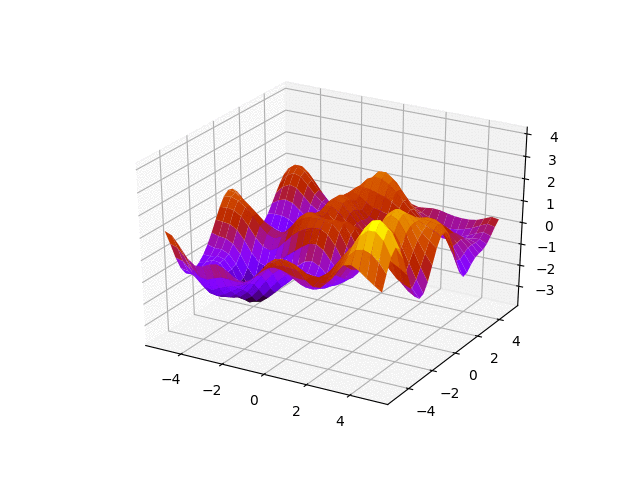This is the repository for the work Transforming Gaussian Processes With Normalizing Flows published at AISTATS 2021 (https://arxiv.org/abs/2011.01596)
General library dependencies:
- libspatialindex (https://libspatialindex.org/):
sudo apt-get install libspatialindex-dev -yInstall python 3.7 environment. First clone the repository. Then, to install a python environment using conda and assuming that $conda is the root to the conda install directory (e.g /usr/local/anaconda3/bin/conda) you must type:
$conda create -y -n DSP_py3.7_torch1.5 python=3.7
$conda activate DSP_py3.7_torch1.5
pip install -r requirements.txtI have uploaded a simplified version version of this code, running on a toy example here https://github.com/jmaronas/Machine.Learning.Models.pytorch/tree/master/models/Gaussian_Processes/SVGP_TGP . If you just want to understand the machinery behind the TGP, avoiding all the wrapping done to be able to run many different experiments as in the paper, then this simplified code should be much more helpfull.
We provide the minimal code to reproduce some of the experiments performed. The reason is to make the code easier to track. If you want more information about some parts of the implementation feel free to email to jmaronasm@gmail.com.
The dataset partitions used are provided in the dataset folder. They are given through pickle objects, e.g in ./code/datasets/regression/uci/. For an example on how to load a particular split you can check the line data_loaders, data_config = return_dataset(dataset_name, batch_size, use_validation = None, seed = train_test_seed, options = options) in the main.py file. Some of the datasets are not kept in the repository due to size constraints, but we provide some files to automatically download them. If you are interested in running some datasets that are not directly provided you can send an email and we will kindly point you to the script that performs the download (e.g in the Airline dataset).
If you wish to compare your work to this work using our data splits, then you can just use our pickle objects with the UCI partitions in your work and then email to jmaronasm@gmail.com asking for the excel books where we keep the results of the paper. We will be happy to share our runs directly with you so that you do not have to re-run our model and just directly plug-in our results into your research.
The results from the camera ready were obtained in Ubuntu 20 machines using Nvidia RTX 2080 GPUs.
To run the example code just go into code folder and execute:
python main.py --model {MODEL} --dataset {DATASET} --train_test_seed_split {SPLIT} --num_inducing {NUM INDUCING}
with the following arguments:
{MODEL}: can beSVGP,TGPorID_TGP(input dependent TGP){SPLIT}: a number in the range[1,10]{DATASET}: can be eitherpowerorbostonNUM INDUCING: number of inducing points to run
These are some of the results obtained with the above code in an Ubuntu 16 machine using a GTX-980:
| Model | Inducing Points | NLL | RMSE |
|---|---|---|---|
| SVGP | 100 | 2.798 | 3.961 |
| TGP | 100 | 2.795 | 3.952 |
| PE TGP | 100 | 2.712 | 3.592 |
| BA TGP | 100 | 2.672 | 3.533 |
| SVGP | 5 | 2.862 | 4.229 |
| TGP | 5 | 2.861 | 4.228 |
| PE TGP | 5 | 2.744 | 3.732 |
| BA TGP | 5 | 2.725 | 3.681 |
The hyperparameters for the rest of the datasets and experiments are provided in the bash scripts in the folder bash_scripts. Here you can find the hyperparameters of the flow of each dataset. These are specified as follows:
flow_arch: functional form of the flow used
num_blocks: Number of flow_arch blocks that are composed to form the flow G (remember from the paper section 3 that G is a composition of elementary invertible mappings)
num_steps: Number of elements in the linear combination of the flows that are made up of linear combinations of flow_arch (see flow in e.g snelson et al 2003 fk = sum_i a_i tanh(f0*b_i+c_i)) + d_i. num_steps refer to the number of i-th elements in the linear combination of tanh flows.
These parameters specify the Neural Network architectures used for input dependent flows.
act_H: hidden activation used
num_H: Number of hidden layers
DR: Dropout probability
BN: Batch Normalization
dim_H: Number of neurons per hidden layer
NNet_inference:Inference (typically monte carlo dropout although we tested some variational Bayes)
If you find this idea / code useful, please consider citing:
@InProceedings{pmlr-v130-maronas21a,
title = { Transforming Gaussian Processes With Normalizing Flows },
author = {Maro{\~n}as, Juan and Hamelijnck, Oliver and Knoblauch, Jeremias and Damoulas, Theodoros},
booktitle = {Proceedings of The 24th International Conference on Artificial Intelligence and Statistics},
pages = {1081--1089},
year = {2021},
editor = {Banerjee, Arindam and Fukumizu, Kenji},
volume = {130},
series = {Proceedings of Machine Learning Research},
month = {13--15 Apr},
publisher = {PMLR},
}
